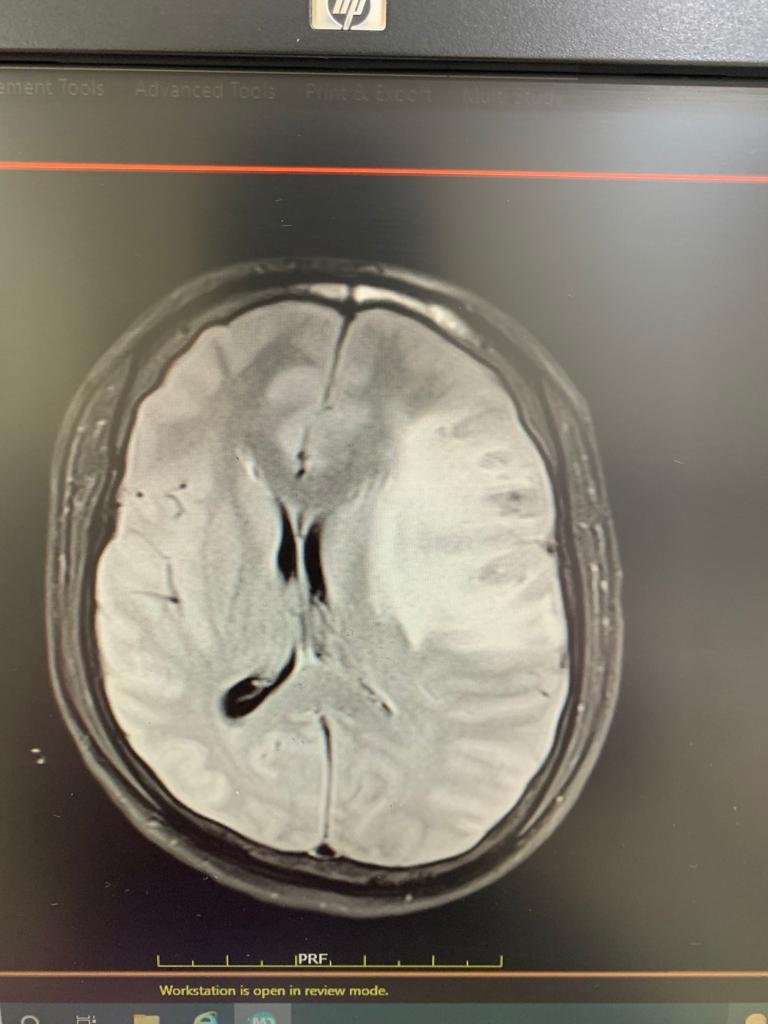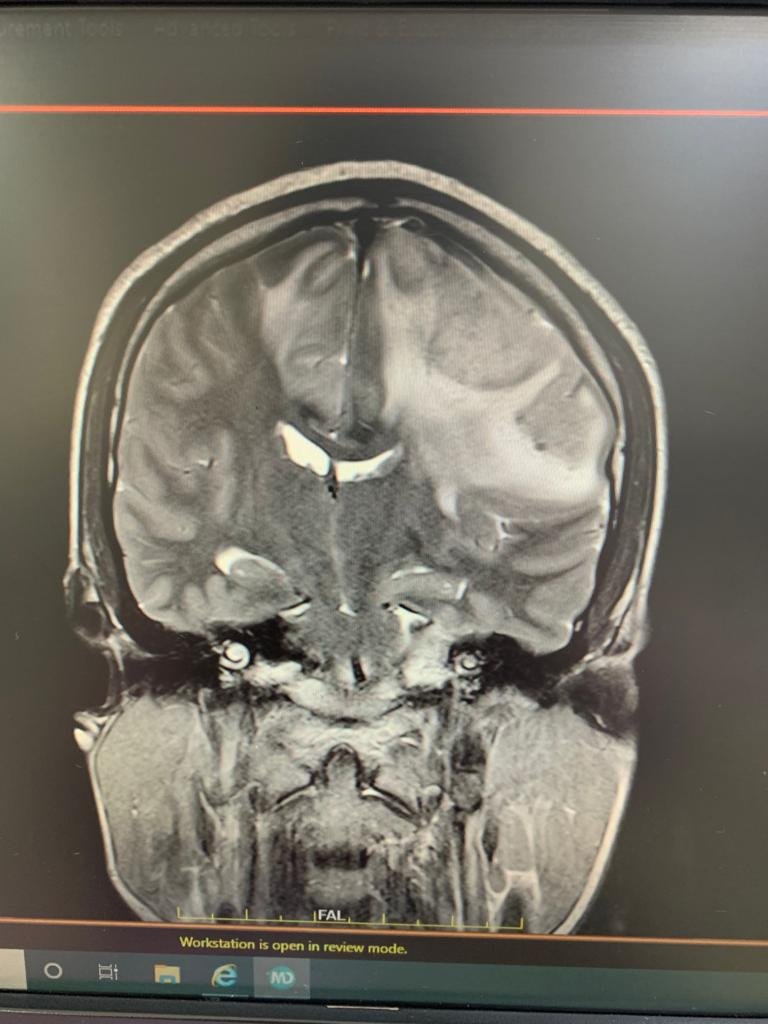Patient Review
- Patient’s Name: Anonyms
- Patient’s Age: 34
- Patient’s Gender: male
Symptoms
- Patient was unconscious with a low GCS of 3/15
Case Presentation
Superior sagittal sinus thrombosis is a rare cerebrovascular accident commonly linked to conditions that might cause thrombosis by causing hypercoagulability, local circulation stasis, and arterial wall abnormalities. It is a relatively infrequent cause of stroke.
Focal neurological abnormalities may follow raised intracranial pressure symptoms. SSS thrombosis is indicated by headache, hemiparesis, and focal epilepsy in relatively younger patients.
With a focal cerebral injury, symptoms might appear due to ischemia, infarction, or hemorrhage. Angiography, computed tomography (CT) scan, or magnetic resonance imaging (MRI) are used to confirm the diagnosis.
Detailed Description
The patient was a 34 years old male unconscious since afternoon and was referred to Fortis Hospital, Mulund, for further treatment. The patient was intubated on arrival and was taken up for an MRI scan. It showed superior sagittal sinus thrombosis with left frontoparietal hemorrhage with massive cerebral edema and herniation.
Dr. Gurneet Sawhney hurriedly finished the closure of the previous surgery and went to see the patient. On examination, Dr. Sawhney found that the patient had anisocoria (unequal pupils), a dire emergency. Immediately, Dr. Sawhney rushed the patient to OT after explaining the prognosis to the relatives.
Dr. Gurneet Sawhney performed craniotomy in 20 minutes. The brain was very oedematous with very feeble pulsations. The pulsations gradually improved, and closure was done. Dr. Sawhney looked at the time after the case. It was 2:30 am. He was exhausted but satisfied. The doctor saw the patient’s pupils, which returned to normal size. The doctor took a sigh of relief.
Treatment and prognosis
- Craniotomy
Physical Examination & Tests
- MRI scan


